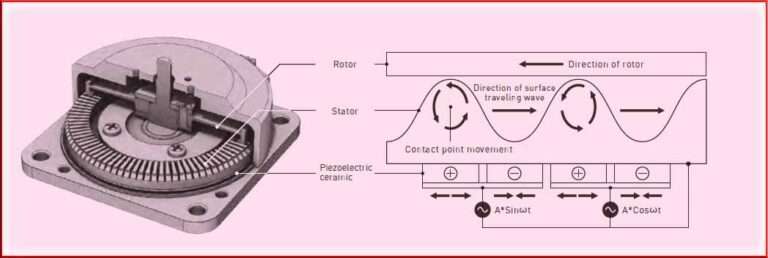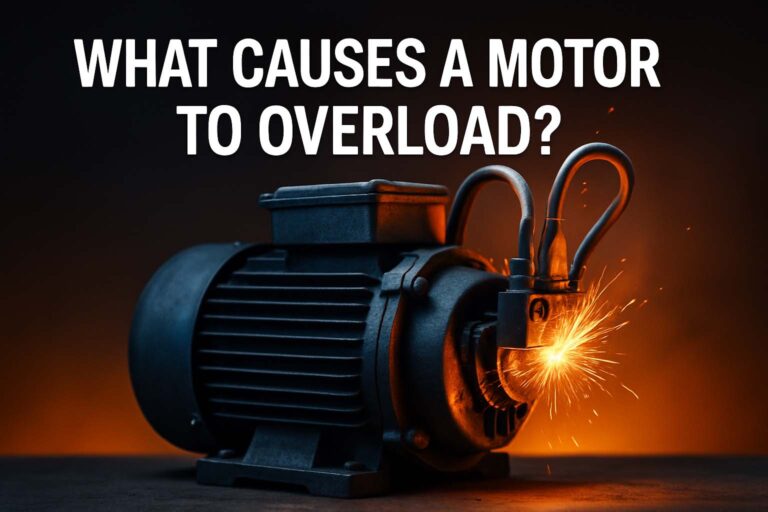What is the Maximum Value for Short Circuit Protection for Multi-Motor Branch Circuits
When dealing with complex electrical systems that include more than one motor, proper protection becomes critical. Among all forms of protection, short circuit protection is one of the most important. It safeguards both equipment and personnel from the devastating consequences of excessive current. This article answers a vital question in motor circuit design—what is the maximum value for short circuit protection for multi-motor branch circuits. The topic is technical but essential for engineers, electricians, and facility managers aiming for safe and efficient operation of motor systems.

To understand the limits for short circuit protection in such systems, we need to delve into standards, practical examples, and real-world implications. We’ll also consider how various factors like conductor sizing, motor ratings, and circuit configurations affect protection values.
Importance of Short Circuit Protection in Multi-Motor Systems
Short circuit protection plays a vital role in preventing equipment damage, fire hazards, and safety risks. A multi-motor branch circuit includes multiple motors connected to the same feeder. This arrangement is common in industrial automation, HVAC systems, and production lines.
In such systems, a fault in one section can potentially affect the entire branch. That’s why determining what is the maximum value for short circuit protection for multi-motor branch circuits becomes a key engineering concern.
A circuit breaker or fuse must interrupt the fault current quickly. But it must also allow normal inrush currents that motors draw when starting. These two opposing demands make the choice of protective devices more complex than for single-motor circuits.
Understanding Code Requirements
According to National Electrical Code (NEC) Article 430, multi-motor branch circuits must follow specific guidelines for overcurrent protection. These include short circuit and ground fault protection. The NEC also gives provisions for motor feeder conductors and combination motor controllers.
For multi-motor circuits, the maximum protective device rating is not simply the sum of individual motor protections. Instead, it is based on the largest motor and additional percentages of the full-load current (FLC) of other motors.
NEC Formula for Maximum Short Circuit Protection
The NEC specifies the following:
- The short circuit protection rating for a multi-motor circuit must not exceed the rating required for the largest motor.
- To that, you add the full-load current of all other motors in the circuit.
- Then apply a multiplier to account for starting currents.
Let’s look at an example.
Sample Calculation
Suppose a branch circuit contains:
- Motor A: 15 HP, FLC = 22 A
- Motor B: 10 HP, FLC = 14 A
- Motor C: 5 HP, FLC = 7.6 A
Largest motor: Motor A
Sum of all other motors = 14 + 7.6 = 21.6 A
As per NEC, the maximum short circuit protection is based on:
125% of the FLC of the largest motor + 100% of the FLC of all other motors
Maximum Protective Device Rating =
(1.25 × 22) + (1.0 × 21.6) = 27.5 + 21.6 = 49.1 A
Now, based on standard device ratings, you may choose a 50 A circuit breaker.
Table: Short Circuit Protection Calculation
| Motor | HP Rating | Full-Load Current (FLC) | Multiplier | Contribution |
|---|---|---|---|---|
| A | 15 | 22 A | 125% | 27.5 A |
| B | 10 | 14 A | 100% | 14 A |
| C | 5 | 7.6 A | 100% | 7.6 A |
| Total | 49.1 A |
Impact of Conductor Sizing
Conductor ampacity must match the expected load current while also handling short circuit conditions. The conductor’s insulation must also be rated for the operating voltage and thermal rise during faults. If the conductor size is too small, it could overheat and fail before the breaker trips.
This is where Short Circuit Protection for the Motor becomes more nuanced. It’s not only about the breaker—it’s about the entire system. Conductors, motor controllers, and breakers must coordinate to interrupt the fault within cycles.
Time-Current Coordination
Circuit breakers and fuses are designed with time-current characteristics. These curves help coordinate protection. The breaker should allow short bursts of high current (motor startup) but trip instantly on short circuits.
When designing for what is the maximum value for short circuit protection for multi-motor branch circuits, engineers use coordination studies to avoid nuisance tripping. You want the protective device to act fast during faults, but stay out of the way during normal conditions.
Types of Protective Devices
There are several types of protection available:
- Thermal-Magnetic Circuit Breakers – suitable for small to medium motors.
- Molded Case Circuit Breakers (MCCB) – handle higher currents, offer adjustable trip settings.
- Fuses (Class J, RK1, RK5) – used for fast response, often in combination with contactors.
- Motor Circuit Protectors (MCPs) – specifically designed for motor branch protection.
Each has its own tripping characteristics, making it essential to select the right one based on system analysis.
Considerations for Generator-Powered Systems
When a generator supplies a motor branch circuit, the short circuit current is often much lower than utility-supplied systems. This affects protection settings. The Generator Circuit Breaker Sizing needs to account for both fault clearing capacity and generator transient behavior.
A short circuit under generator supply may not trip a breaker rated for higher fault levels. This makes proper breaker sizing and coordination even more critical. Generator breaker curves must align with the generator’s subtransient and transient reactance.
Fault Current vs Short Circuit Current
Many people confuse the two terms. But there’s a distinct Difference between Fault Current and Short Circuit Current.
- Short Circuit Current refers to the maximum current that flows when two conductors come in direct contact, bypassing the load.
- Fault Current can include short circuits, ground faults, and line-to-line faults. It considers the impedance of the entire path.
Knowing this difference helps set the correct protection level. You might size your protective devices for short circuit currents, but testing or coordination studies often use fault current values.
Motor Starting Considerations
Another challenge in determining what is the maximum value for short circuit protection for multi-motor branch circuits is the motor starting current. Motors can draw 5 to 7 times their full load current at startup. Your protective device must tolerate this without tripping.
So, while 125% of the largest motor’s FLC works well under NEC guidelines, you may still face nuisance tripping if motor starting is frequent. In such cases, an inverse-time breaker or a properly rated MCP is preferable.
Industrial Best Practices
Engineers often:
- Perform a short circuit study to determine fault levels
- Use coordination software like ETAP or SKM PowerTools
- Select devices with adjustable long and short delay trips
- Use motor protection relays for large systems
- Include backup protection in upstream panels
The goal is to create a protective hierarchy where the nearest breaker to the fault trips first, avoiding system-wide shutdowns.
Summary Table for Quick Reference
| Element | Recommendation |
|---|---|
| Protective Device Size | 125% of largest motor FLC + 100% of others |
| Breaker Type | MCCB or MCP for higher accuracy |
| Coordination | Time-current study needed |
| Generator Supply | Adjust breaker to suit generator impedance |
| Fault Type Distinction | Know the difference between short and fault |
| Conductor Protection | Match conductor ampacity with device rating |
| Start-Up Current Tolerance | Select devices that handle inrush without trip |
Final Thoughts
Understanding what is the maximum value for short circuit protection for multi-motor branch circuits is more than just reading code. It involves knowing your motors, your power source, your conductor sizes, and your protective device characteristics.
By following NEC guidelines, coordinating your devices, and considering practical challenges, you can create a robust and safe motor circuit system. Always perform a detailed analysis when dealing with multiple motors on a single branch. This will prevent failures, reduce downtime, and ensure compliance with industry standards.
Follow Us on Social:
Subscribe our Newsletter on Electrical Insights for latest updates from Electrical Engineering Hub
#ShortCircuitProtection, #MultiMotorCircuits, #ElectricalEngineering, #CircuitProtection, #NECStandards, #MotorBranchCircuits, #OvercurrentProtection, #IndustrialWiring, #ElectricalSafety, #ElectricalDesign, #PowerDistribution, #MotorControl, #ShortCircuitCurrent, #NECRules, #MotorProtection




